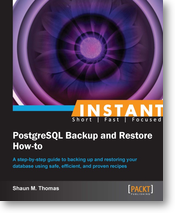Mam do sprzedania (lub do oddania, zależnie jak na to spojrzeć) toyotę GT86. Produkcja 2012, rejestracja 2013 (chyba luty). Przejechane ~ 3000 kilometrów, bezwypadkowa.
Wersja: manualna zmiana biegów, czarne wykończenie, bez nawigacji, kolor pomarańczowy. Zdjęć nie daję, chyba, że bardzo ktoś zechce, bo dupa ze mnie a nie fotograf, a na sieci są tysiące zdjęć tego wozu. A przy jego stanie nie ma znaczenia czy się ogląda zdjęcią nówek z salonu, czy tej ode mnie.
Co z nią jest? Nic. wszystko jest Tip-Top. Jedyne uszkodzenie to lekko zagięta felga – obejrzał ją i przetestował serwis Toyoty (Toyota/Chodzen w Piasecznie) i orzekli, że poza kwesią estetyczną – nic jej nie jest.
W komplecie dodaję opony zimowe (używane do kwietnia) i aktualnie założone letnie – nówki, kupione na samochodzie, i jedne i drugie.
Dziś zrobiłem “przegląd" po 3k km – wymiana oleju, zgodnie z zaleceniami Toyoty.
W samochodzie nie było palone, był trzymany w zadaszonej wiatce. Ogólnie – cód, miód, paluszki lizać. Jeśli lubisz jazdę samochodem – to jest samochód dla Ciebie. Sens istnienia tego samochodu można zobaczyć na sieci, choćby tu:
Cena: samochód jest wzięty w leasing, i mogę ten leasing odstąpić. 4 lata (czyli jeszcze około 3.5 przed nami), z ratą miesięczną 2.7k pln.
W takim układzie, o ile kupującego zaakceptuje toyota leasing (przepisanie leasingu), to dla mnie – 5000 pln.
Alternatywnie – sprzedam za gotówkę, przy czym musiałbym dostać 120000 pln by pokryć koszty leasingu.
No i finalnie: dlaczego sprzedaję takie cudo? Nie znudził się. Żona nie marudzi (zasadniczo nie podoba jej się, że chcę oddać – bo ciężko tu mówić o sprzedaży, gdy nie dostanę z powrotem choćby połowy tego co już wpłaciłem). Problem jest inny – ten samochód chce być jeżdżony. A ja nie mam gdzie. Przez te 4 miesiące dostałem mandatów łącznie na ponad 2 razy więcej niż przez całe życie do tej pory. Nie umiem nią jeździć “legalnie", a jak mi zabiorą prawo jazdy, to i tak się nie nacieszę. Więc może znajdzie się ktoś kto przygarnie …
